

Get Out On Rock is a collaboration between Neil Gresham (top-level climber and Britain foremost coach) and Libby Peter (experienced Mountain Guide and climbing Instructor). It brings you the very latest in rock climbing skills and techniques and provides instruction and inspiration whether you're venturing onto rock for the first time or getting more adventurous with your climbing.
The DVD is available from: Libby Peter's Website
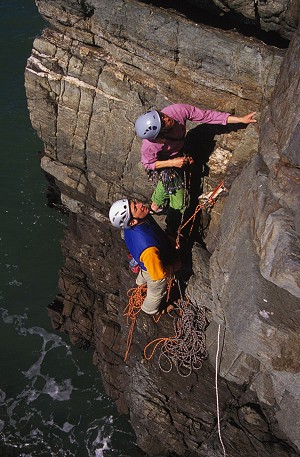
It may seem boring and trivial but getting yourself attached to the anchors safely and appropriately at the end of a pitch is an essential skill best learnt early on in your climbing career. Learn this simple system and learn it well, then next time you're taking a hanging belay above a wild sea you just might be mildly less terrified.
When to use the rope
Having some rope in the belay system makes it more dynamic by helping to absorb some of the energy generated in a fall so that the load (known as the impact force) transferred to the anchors is lower. On multi-pitch trad routes, when you're using nuts and cams in the belay, it's a good idea to use the rope to attach yourself to the anchors. We'll show you a system here that's simple, versatile and easy to remember.
How to use the rope
Single anchor:
Just occasionally you may be happy to use only one totally bombproof anchor, like a massive tree or block. Attaching yourself to a single anchor is simple, just decide if the anchor is within arm's reach or not. This will depend on the size of the ledge, how far back the anchor is and the best position for you to see your partner from.
Single anchor within arm's reach:
Use a clovehitch on a screwgate on the anchor and adjust until there's no slack, as shown in diagram 1 (shown below). A clovehitch is the best choice here as it's so quick and easy to adjust.
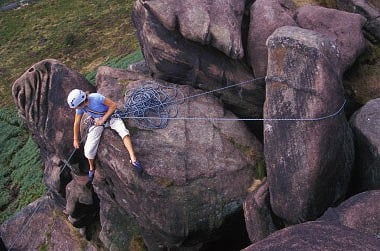
Single anchor out of arm's reach:
Loop the rope through the screwgate on the anchor and use a clovehitch on a screwgate clipped to the central rope loop (the one that's created when you tie on). Keep adjusting until you get to the position you want to be, as in diagram 2 (sown below).
If the anchor is a huge gritstonesque block you won't get even a super-long sling over it, so feed a loop of round around it and tie off back to your central rope loop with that magical adjustable clovehitch
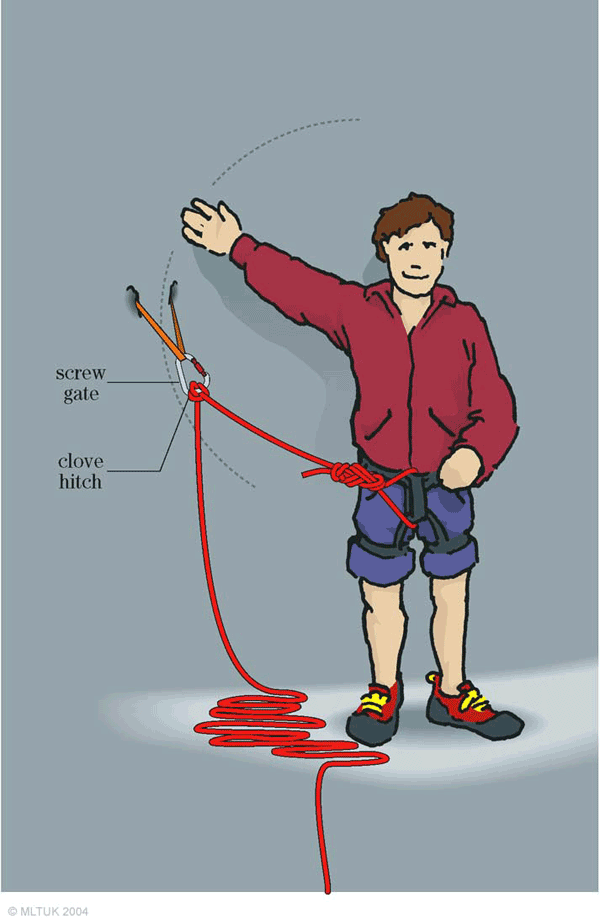 |
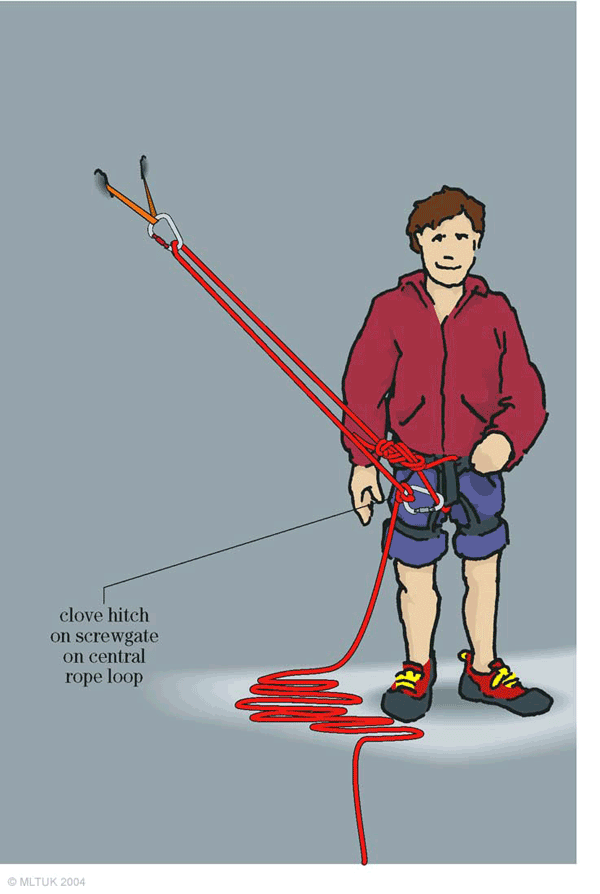 |
Multiple anchors:
Most of the time you'll want at least two bombproof anchors in your belay. If either of these are anything less than perfect add a third and so on (some Gogarth belays require 5 or 6 pieces!)
Two anchors within arm's reach:
Take a look at diagram 3 (below), it shows how you tie a clovehitch at the first anchor, leave a little slack before adding a clovehitch at the second anchor. Finish it off with a clovehitch back on the central rope loop. Adjust any of the clovehitches to get the tension equal.
Two anchors out of arm's reach.
I'm sure you've worked it out by now, simply clip the rope through both anchors and move away to your belay position holding the middle section of rope. Clovehitch this middle section of rope first and get the tension right before adding the second clovehitch. Diagram 4 shows this method (shown below). Two clovehitches side by side will fit in a big HMS/pear-shaped screwgate, if you only have small ones use two separate screwgates.
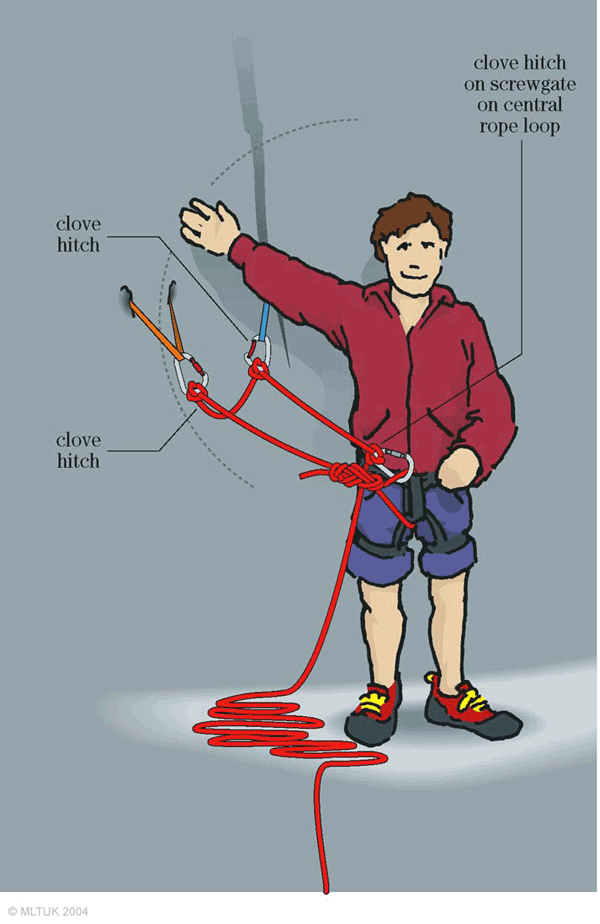 |
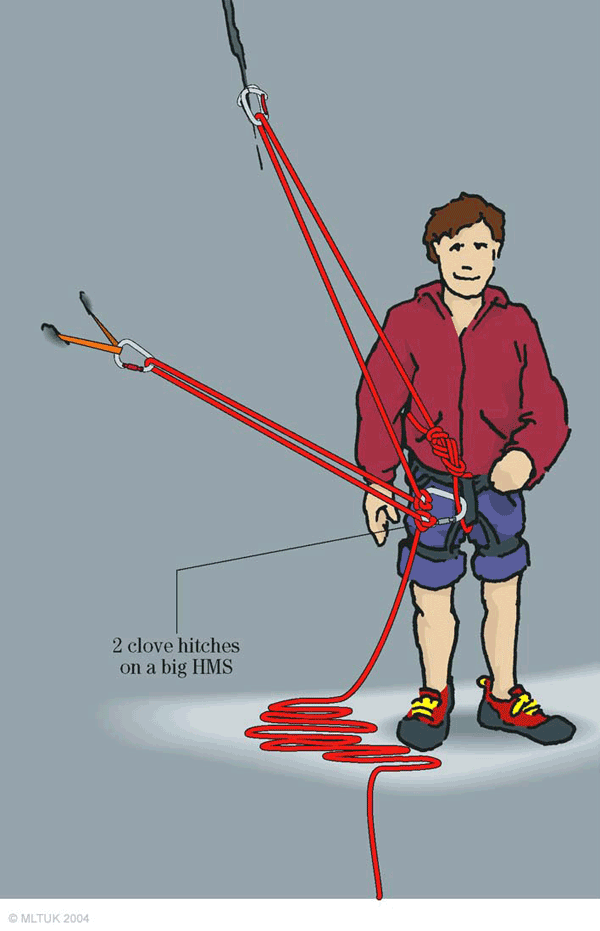 |

So far we've looked at using a single rope but don't panic, life actually gets simpler when you start using double ropes. For single anchor belays use either of your ropes (or both if you want to minimise stretch) and for a multiple anchor belay clovehitch one rope into each anchor.
If the anchors are out of arm's reach clip a rope into each and then move away to where you want to position yourself and clovehitch to your central rope loop as before.
This works well on crumbly cliff tops where the solid anchors are a long way back but you want to perch on the cliff edge to get a view of your partner and avoid showering them with rocks.
When to use slings
Using slings to bring multiple anchors to a central point is useful if one person is leading all the pitches; you're climbing as a team of three or if you want to use a direct belay. It creates a single solid attachment point that's quick and easy to clip into. But remember that slings have hardly any stretch so in a fall a higher impact force will be transmitted to the anchors
How to use slings
There are several ways to use slings to equalise anchors just remember these basic principles:
- Equally loaded (equal tension to each anchor)
- Independent of each other (so if one anchors pops the other isn't shock loaded)
- Have and angle less than 60 degrees between them (see why in the diagrams below)
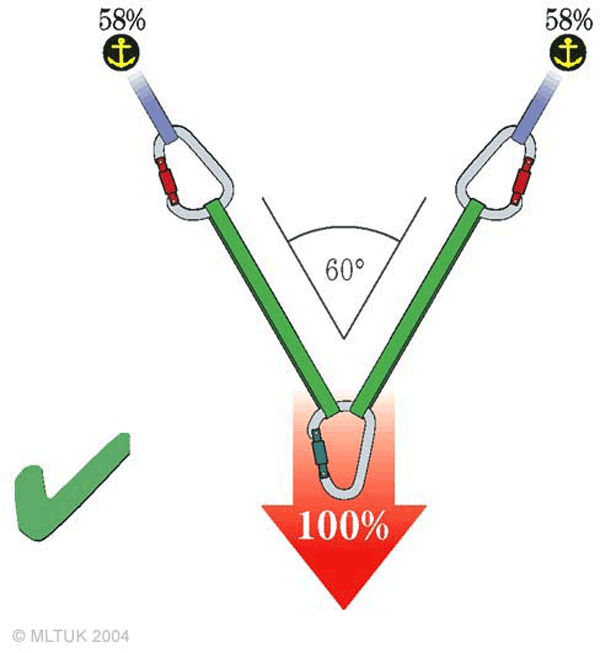 © Libby Peter Article |
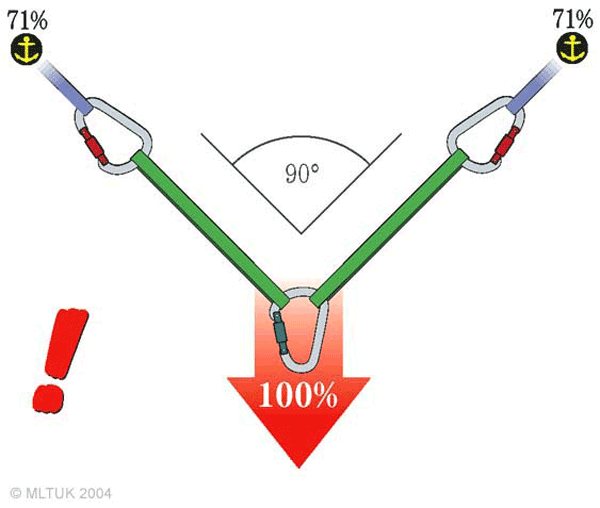 © Libby Peter Article |
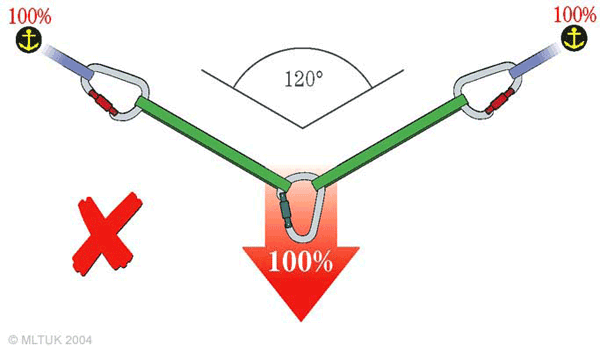 © Libby Peter Article |
Take a look at some of the best ways to use slings in this short clip from Get Out On Rock:
VIDEO: Equalising Anchors
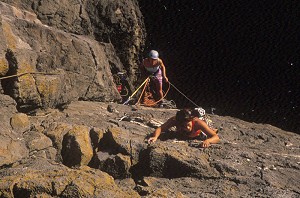
Of course you can always mix and match with the rope and slings and often this gives you the best of both worlds, a sling to get clipped in quick and the rope to add a dynamic element to the belay. This works well if you've abseiled into a hanging belay as you can see in the photo on the right.
And finally
Don't be disheartened if it feels like it takes you ages to set up the perfect, equalised belay, it's always worth those extra few minutes, even if you're partner is getting grumpy and impatient!

- ARTICLE: My Favourite Route - Cemetery Gates by Libby Peter 23 Dec, 2024
- VIDEO: How to Protect Traverses 24 May, 2010
- VIDEO: Double ropes ? what, when, why, where and how! 5 May, 2010
- Surviving Sea-cliff Adventures 8 Apr, 2010
- VIDEO: How to rig an abseil 1 Apr, 2010
- VIDEO: How To Rig a Top Rope 3 Mar, 2010


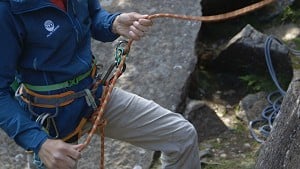











Comments